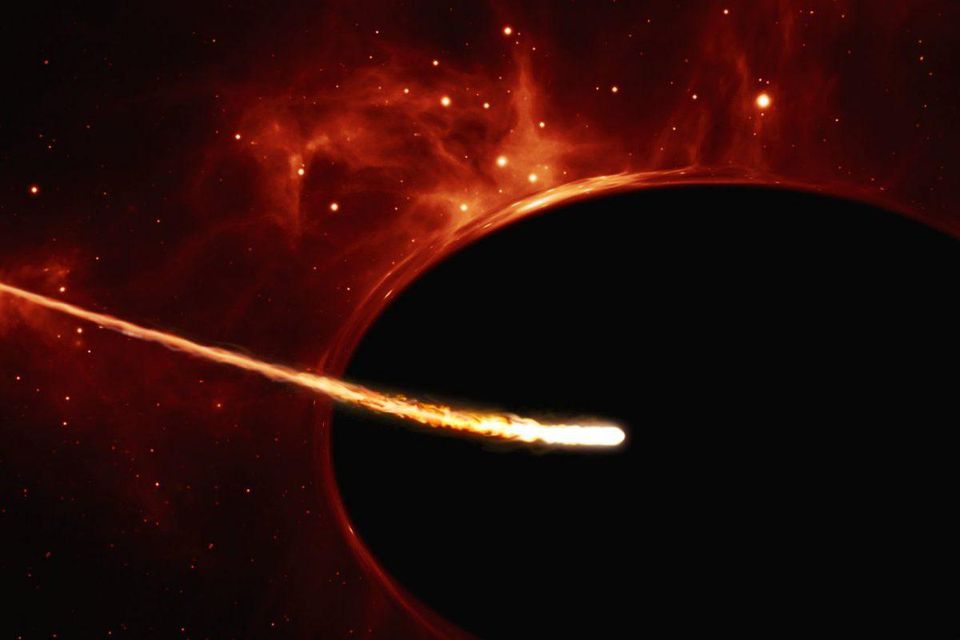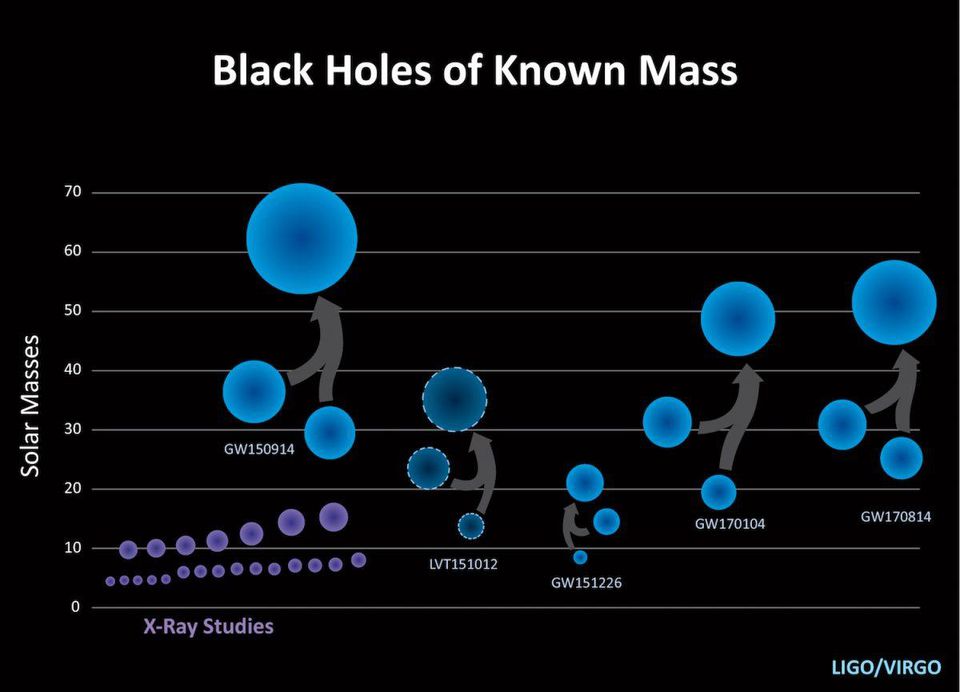Ask Ethan: Can matter run away from the horizon of events during the confluence of black holes?

Black holes should have accretion disks from which matter falls in them, and after crossing the event horizon, matter should no longer have a way to get back. Could something affect this order of things?
Once having gotten beyond the horizon of a black hole event, it will not be possible to get out. There is no speed that would help to get out of there, even the speed of light is not enough for this. But, according to the general theory of relativity, space in the presence of mass and energy is bent, and the fusion of black holes is one of the most extreme variants in nature. Is it possible to fall into BH, cross the event horizon, and then run away from there, while this horizon is distorted as a result of a massive merger? This question arose from our reader:
If two BHs unite, is it possible that the matter inside the event horizon of one of the BHs could escape from there? Can she run away and move to another, more massive BH? And run away immediately beyond both horizons?
The idea, of course, is insane. But is she mad enough to work? Let's find out.

When the lifetime of a massive star comes to an end, or when sufficiently massive star remains merge, the BH may result. The event horizon will be proportional to its mass, and around it will be an accretion disk of matter falling into it.
Usually BH is formed during the collapse of the nucleus of a massive star, which occurs either after a supernova explosion, or when neutron stars merge, or during direct collapse. As far as we know, each BH consists of matter that was previously part of a star, therefore BH in many ways is the final form of stellar remains. Some BHs appear in isolation, others are part of a binary system or even a system of several stars. Over time, BHs can not only come closer in a spiral and merge, but also absorb other matter falling inside the event horizon.
')

In the case of the Schwarzschild BH, a fall into it leads to singularity and darkness. It does not matter in which direction you will move, how much to accelerate, and so on - crossing the horizon inevitably leads to a meeting with the singularity.
When something crosses the horizon of BH events outside, this matter is doomed. In just a few seconds, it will inevitably encounter a singularity in the center of the BH: in the case of a non-rotating BH, this will be a point, and in the case of a rotating BH, a ring. The BH itself has no memory of what particles fell into it, and what their quantum state was. From the point of view of information, only the total mass, charge and angular momentum of the BH remains.

In the last moments before the merger, the space-time around the BH pair will be distorted, and the matter will continue to fall into both BHs from the surrounding space. There is not a single moment in which it would be possible to escape from the inside of the event horizon to the outside.
Then you can imagine a situation where matter falls in BH in the final stages of a merger, when BH is ready to merge with another. Since the BH, in theory, should always have accretion disks, and there is always matter somewhere in the interstellar space, the particles must constantly cross the event horizon. Everything is clear, and we can consider a particle that has just hit the horizon of events in the last moments before the merger.
Can she run away? Can she jump from one BH to another? Let's examine the situation in terms of space-time.

Computer simulation of the merger of two BHs and the space-time they distort. Gravitational waves are emitted in abundance, but matter should not break out.
When two BHs merge, the merger itself occurs after a long period of convergence in a spiral, during which energy is radiated outward in the form of gravitational waves. It radiates up to the very last moment before the merger. But because of this, the horizons of the events of both BHs are not compressed; This energy appears due to the ever-increasing deformation of space-time in the region of the center of mass. One can imagine a similar process in which the energy of the planet Mercury would be lost - as a result, the planet would approach the Sun, but this property of the Sun and Mercury would not change.
However, at the very last moments before the BH merger, the event horizons begin to distort due to their gravitational influence on each other. Fortunately, specialists in numerical methods of the theory of relativity have accurately calculated exactly how this merger affects the horizons of events, and this is a stunningly informative calculation.
Despite the fact that up to 5% of the total BH mass before a merger can flow outward in the form of gravitational waves, it can be noted that event horizons are never compressed; a connection appears between them, they are slightly distorted, and then increase in volume. The last point is important: if you take two BHs of the same mass, their event horizons will occupy a certain volume. If you merge them and create one double mass BH, then the volume occupied by the event horizon will be four times larger than the total volume occupied by the events horizons of two BHs. BH mass is directly proportional to its radius, and the volume is proportional to the cube of the radius.

We found many BHs, and all of them have an event horizon radius directly proportional to the mass. Double the mass - the radius will double, the horizon surface area will quadruple, and the volume will be eight!
It turns out that even if the particle is kept in a fixed state inside the BH, and it is made so that it falls as slowly as possible to the singularity in the center, it still cannot get out of the event horizon. The total volume of the total event horizon increases, not decreases, and regardless of the trajectory of the particle crossing the event horizon, it is destined to be forever swallowed by the combined singularity of both BHs.
In many scenarios of collisions in astrophysics there is a “ejection” [ejecta], when matter from the inside of the object breaks out during the cataclysm process. But in the case of a BH merger, everything that was inside remains inside; most of what was outside gets inside; only a small part of what was outside, in principle, can escape. If something has already fallen inside, it is doomed, and nothing will change it, no matter what you throw in the BH - even another BH!
Ethan Siegel - astrophysicist, popularizer of science, blog Starts With A Bang! He wrote the books Beyond The Galaxy , and Treknologiya: Star Trek Science [ Treknology ].
Source: https://habr.com/ru/post/374381/
All Articles